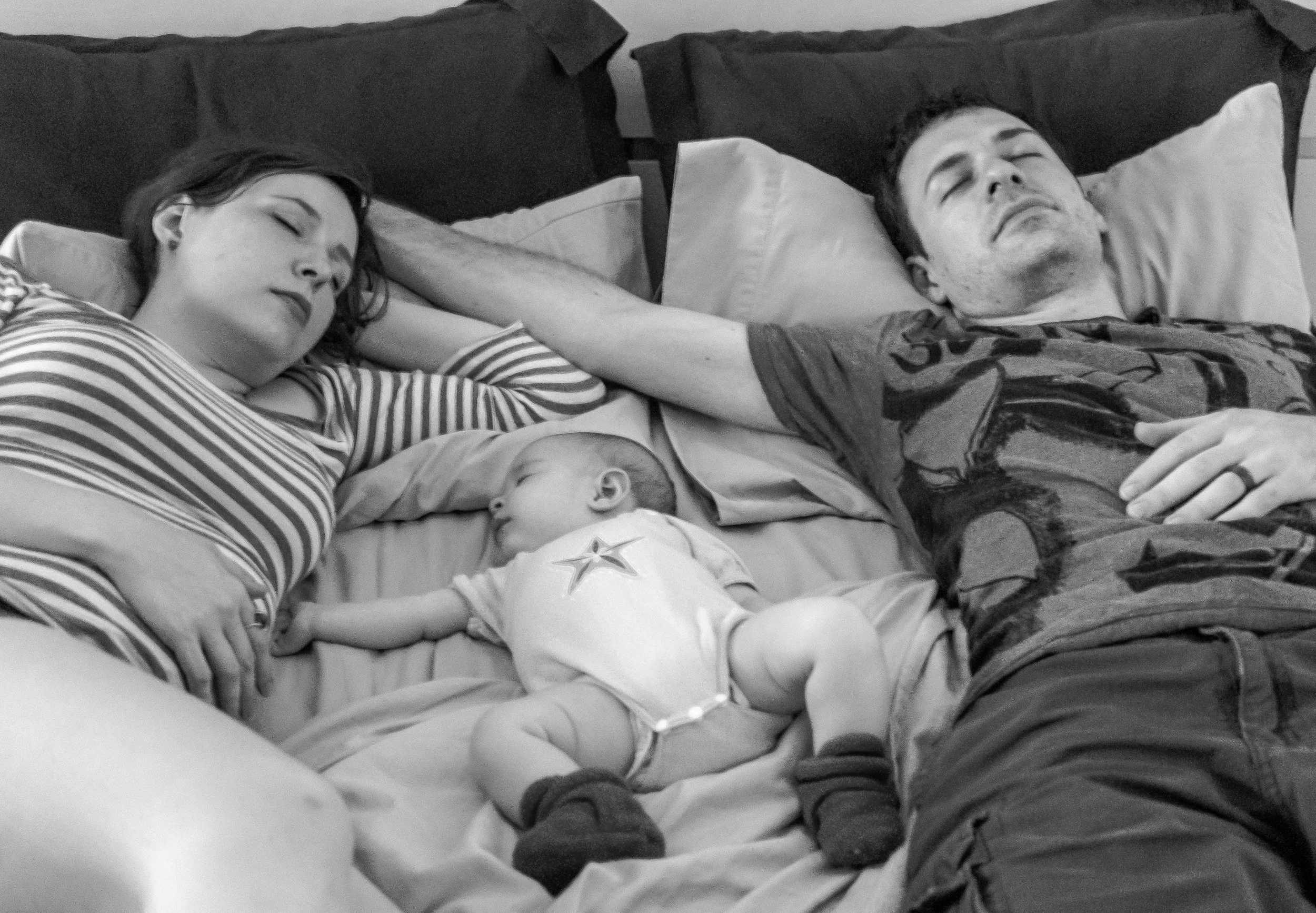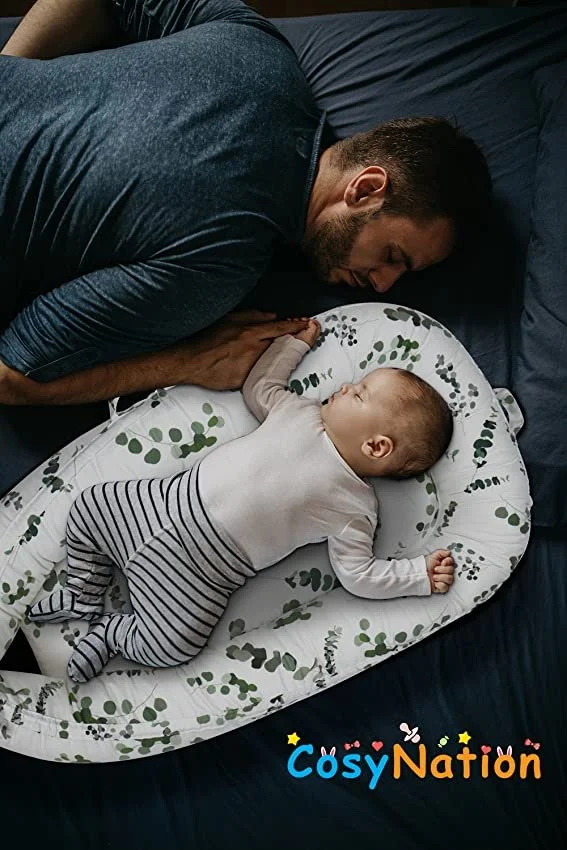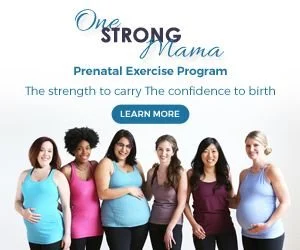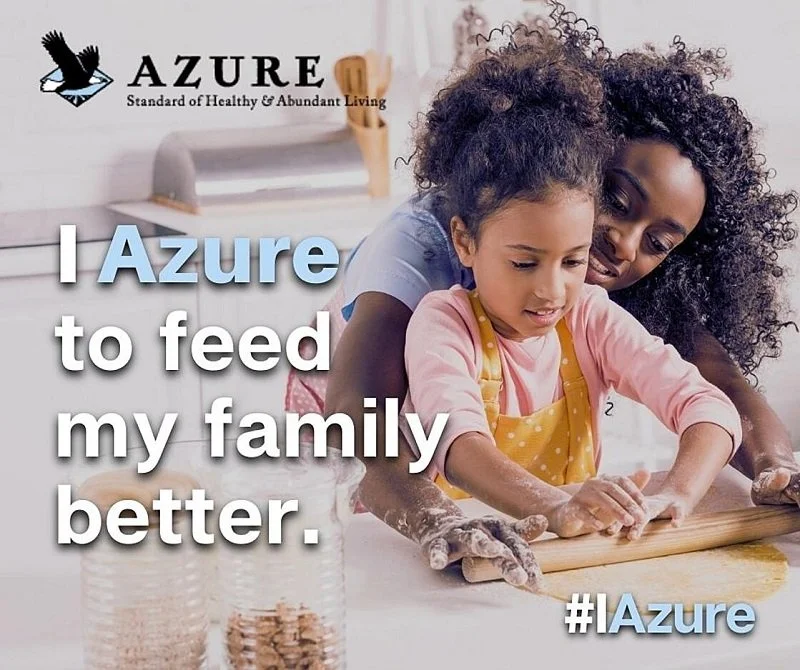Bed sharing, co-sleeping, and the family bed
“For the overwhelming majority of mothers and babies around the globe today, cosleeping is an unquestioned practice. In much of southern Europe, Asia, Africa, and Central and South America, mothers and babies routinely share sleep. In many cultures, cosleeping is the norm until children are weaned, and some continue long after weaning.”
Co-sleeping Around the World
We waited 4 years into our marriage before starting a family. Having children was definitely on our radar, but I was a month shy of my 22nd birthday when we got married and wasn’t in any rush. I had actually created a long list of things to accomplish and places to visit before we truly ‘settled down’. I don’t know if I could have ever checked all those boxes honestly (is it even possible to be perfectly prepared and 100% ready to have a baby?), but thankfully a pretty cool experience while in savasana (meditation) nudged me in the right direction. And boom - we were pregnant that very month! We agreed having me home full-time with baby was a priority so we made some big decisions in preparation for a significant income loss. We downsized from our 4 bedroom house and moved in with my inlaws. And our financial contribution helped them finish a renovation - double win! So instead of this decision feeling like a setback, it was freeing. I continued to work as a massage therapist and yoga instructor through my 8th month of pregnancy, but it was so nice to know I could truly listen to my body and be done working when I was ready. Simplifying life allowed us to focus on what was most important more easily. And one of the best perks of having less space and being more intentional about our spending was embracing co-sleeping! I mean, I already knew babies didn’t need a separate nursery space or a crib - I grew up with younger siblings and a mom who practiced attachment parenting. But that doesn’t mean I would have been immune to the consumer messaging of our modern western world (and I’m a total sucker for design and decor!). So I am very grateful for the physical space limitations during that season! I was able to fully appreciate the simplicity and connection bed-sharing offers. And get this: our family continued to grow…4 more babies! And we never did buy a crib or have a separate nursery despite having a lot more space of our own again.
Our babies don't need a beautiful nursery. They need us.
What is the difference between bedsharing and co-sleeping?
Co-sleeping is a more general term for sleeping in close proximity to baby. This could be in the same room, in arms reach, or bedsharing. Bedsharing is when baby and mother (or often both parents) share the same sleep surface. This is sometimes referred to as the family bed. A family bed does not imply that the whole family shares the same bed, but it includes many possible arrangements. For example, I have a close friend who settled on 2 king-sized beds on the floor side by side as her family grew over the last 10 years! Co-sleeping (room sharing) without bedsharing has been the official recommendation by the American Academy of Pediatrics because it still offers up to a 50% SIDS reduction without having to address the potential individual risks and personal responsibility of bedsharing.
Why bedshare?
Our physical proximity helps regulate a baby’s temperature and stress response, not to mention help ensure breastfeeding success. Babies need to nurse often. Much more often than the 3 hr intervals mentioned in books and proposed by many well-meaning doctors. Those feeding recommendations were set for bottle-fed babies! The beauty of removing physical barriers and ditching the clock is watching your intuition muscles grow and learning to trust yourself more. Trusting yourself and trusting your ability to listen and respond to your baby’s cues can become your mothering superpower! The two of you have a connection that can be nurtured even deeper to provide responsiveness and more answers than any book or method could offer. Really! I love to look at how other mammals instinctively care for their young in the early days and weeks. There is an innate wisdom that goes beyond an animal’s observation skills. Feeling safe and calm stimulates the parasympathetic nervous system (rest and digest mode) which allows mamas to completely surrender as they provide nourishment, security, and warmth. Oxytocin release (the wonderful love and connection hormone) and deeper rest can happen more easily when mamas are not getting up to feed baby through the night. This deeper rest can help with physical healing, milk production, and even mental health too! But because baby humans are helpless for much longer than other mammals our adult brains seem to need more stimulation and validation along the way. Our modern culture also doesn’t support women as well during this “4th trimester” and the first year. This is why having a supportive community is incredibly important! In-person gatherings are ideal - Le Leche League meetings are a great place for breastfeeding support and to meet other women in your current season. Also, seeking out a circle/meet-up associated with a midwifery practice or baby-wearing group will likely support a more biological approach to parenting. Being mindful of choosing supportive books, websites, and forums to learn from can also bridge some gaps and provide wisdom lost in our modern culture. Check out my resource guide for a few of my favorite books on parenting and helpful sites like Mothering and Kelly Mom.
photos submitted by bed sharing friends
How to bedshare safely
There are many things to keep in mind to ensure safe bedsharing, but most of them are common sense. And remember, these recommendations apply to any surface a baby may sleep on with or without an adult.
babies should be placed on their backs unless actively nursing
sleep surface should be firm (never on waterbeds, pillows, sheepskin, or bean bag style chairs)
mattress bedding should be tight-fitting and there shouldn’t be any excess pillows, stuffed animals, or loose beading near baby’s face
mattress should be tight-fitting to headboard (and footboard) with no gap between adjoining wall where baby could roll and be trapped
baby appears to be safest when sleeping beside his/her breastfeeding mother (ABM, 2008)
do not swaddle your baby when bed-sharing - baby may overheat (a risk factor for SIDS) and a swaddled baby is not able to effectively move covers from the face or use arms and legs to alert an adult who is too close (more)
do not sleep with baby if you are currently a smoker or if you smoked during pregnancy – this greatly increases SIDS risk
do not sleep on the same surface as your baby if you are overly tired or have ingested alcohol/sedatives/drugs (or any substance that makes you less aware)
older siblings or other children should not sleep next to babies under a year old
other potential hazards: very long hair should be tied up so that it does not become wrapped around baby’s neck; a parent who is an exceptionally deep sleeper or an extremely obese parent who has a problem feeling exactly how close baby is should consider having baby sleep nearby, but on a separate sleep surface (more)
THE SAFE SLEEP SEVEN BEDSHARING SONG
(to the tune of “Row, Row, Row Your Boat”)
No smoke, sober mom
Baby at your breast
Healthy baby on his back
Keep him lightly dressed.
Not too soft a bed
Watch the cords and gaps
Keep the covers off his head
For your nights and naps.
Personal tips
After bedsharing exclusively with all 5 babies (14 years straight), I honestly think the ONE essential item is a good bed rail. This allows you to maximize your bed’s surface area and feel more comfortable having baby on the outside edge as well vs just the middle. A rail is helpful as babies gain mobility as well. Having your bed on a very low frame or directly on the floor is also a great option. Another (somewhat obvious) must-have is a mattress protector if you don’t already have one on your bed. I used a fitted version for many years, but they’re pretty thin and become less absorbent prematurely without warning. They’re also pricey. I really like these large washable pads even more (or in addition to) because they’ve never failed and wash so well. I place one of these underneath the fitted sheet where baby and I are most likely to be. You could also lay directly on it to avoid having to change sheets completely. Just depends on how leaky you and your baby are (think: breastmilk, spit-up, blowouts). They’re also amazing for kid’s beds when they’re potty training (and beyond)! I just place one under their fitted sheet.
If you’re just beginning to get used to a new person in your bed and feel nervous about the idea you may want to consider a bassinet that is designed to create a ‘sidecar’ addition. This keeps baby close, but also adds more personal space for baby. As you and baby get more comfortable breastfeeding during the night you may find that it doesn’t get much use beyond the first couple of weeks though ;) It could still be handy for keeping diapers, wipes, a burp rag, extra nursing pads, a book for you, and an absorbent towel nearby. A clean towel will be your best friend if you find yourself in a puddle of breast milk or spit up in the middle of the night…or are lucky enough to experience a nighttime blowout - just place it under you and babe till morning)!
These nest-style cushions are popular because they help mimic the cradle and warmth of being in your arms. There are pros and cons to these cushions. Be sure to read about the importance of varied head positions for optimal head shape, movement, and development. Know that they are not advised to be used in bassinets/cribs, but they can be a wonderful accessory for play, lounging, tummy time, and other more supervised rest times! Definitely not a necessity, but helpful if you have other children to tend to and need a safe option for baby to hang out nearby when you can’t babywear as easily.
Thoughts from experts
According to the Academy of Breastfeeding Medicine, in their Clinical Protocol #6: Guideline on Co-Sleeping and Breastfeeding:
There is currently not enough evidence to support routine recommendations against co-sleeping. Parents should be educated about risks and benefits of co-sleeping and unsafe co-sleeping practices and should be allowed to make their own informed decision.
The ISIS Infant Sleep Information Source website notes:
The most recent studies have shown that most bed-sharing deaths happen when an adult sleeping with a baby has been smoking, drinking alcohol, or taking drugs (illegal or over-the-counter medicines) that make them sleep deeply.
Sometimes people fall asleep with their babies accidentally or without meaning to. This can be very dangerous, especially if it happens on a couch/sofa where a baby can get wedged or trapped between the adult and the cushions.
James J. McKenna, Ph.D., a world-recognized infant sleep authority, notes:
In sum, overwhelmingly, bedsharing deaths are associated with at least one independent risk factor associated with an infant dying. These include an infant being placed prone (on its stomach) and placed in an adult bed without supervision, or no breastfeeding, or other children in the bed, or infants being placed in an adult bed on top of a pillow, or who bedshare even though their mothers smoked during the pregnancy therein compromising potentially the infants ability to arouse (to terminate too little oxygen, or to terminate an apnea). Drug use and alcohol have historically been associated with poor outcomes for bedsharing babies so if drugs and/or alcohol are present, please don’t bedshare.
Dr. McKenna also notes that
It has never been proven, nor shown, nor is it even probable, that sleeping with your baby has any kind of negative long-term effects when the relationships between those involved are healthy. Instead, experts are finding that cosleeping can help develop positive qualities, such as more comfort with physical affection, more confidence in one’s own sexual gender identity, a more positive and optimistic attitude about life, or more innovativeness as a toddler and an increased ability to be alone.
See also: What are the long term effects on my baby of sharing a bed? by James McKenna, PhD.
More information
Co-sleeping safety
Where Babies Sleep from the ISIS Infant Sleep Information Source
Guidelines to Sleeping Safe with Infants by James J. McKenna, Ph.D.
Safe Sleep 7: Is it safe to bedshare? is a free handout for parents, produced by La Leche League International
Infant Health Research: Bed Sharing, Infant Sleep and SIDS from the UNICEF UK Baby Friendly Initiative
Attachment Parenting International – Infant Sleep Safety
Babies sharing their mothers’ beds while in hospital: a sample policy from the UNICEF UK Baby Friendly Initiative
Guideline on Co-Sleeping and Breastfeeding, Clinical Protocol Number 6 from the Academy for Breastfeeding Medicine
SIDS and Other Sleep-Related Infant Deaths: Expansion of Recommendations for a Safe Infant Sleeping Environment AAP Policy Statement (Oct. 17, 2011)
Logistics: Making co-sleeping work for your family
Good Nights – The Happy Parents’ Guide to the Family Bed (and a Peaceful Night’s Sleep!) by Dr. Jay Gordon
How to make sleep sharing work from BabyCenter.com, with input from James McKenna, PhD
Co-sleeping: Yes, No, Sometimes? by William Sears, MD
Collections of co-sleeping articles
Sleep & Family Bed articles from Mothering.com
Sleep & Family Bed Articles at The Natural Child Project
Making & defending the decision to co-sleep – Research and opinion articles on co-sleeping
Responding to criticism is written about breastfeeding, but can be applied to any other parenting choice that draws criticism from others. Some of the links included are directly geared toward co-sleeping.
Safe Sleep & the Breastfed Baby from La Leche League Great Britain
Is the Western Way of Raising Kids Weird? BBC Future, February 2021
What Every Health Professional Should Know About Sleeping with Baby by James J. McKenna, Ph.D.
Does Bedsharing Increase the Risk of Death for Younger Infants? by Tracy Cassels BA, MA, PhD, at Evolutionary Parenting, discusses this article: Colvin JD, Collie-Ackers V, Schunn C, Moon RY.
Sleep environment risks for younger and older infants. Pediatrics 2014; doi:10.1542/peds.2014-0401.
Interview with James J. McKenna, Ph.D. from the Huffington Post
Should the AAP Sleep Alone? by Melissa Bartick, MD, MSc, from the Academy of Breastfeeding Medicine blog, April 2014
Somebody’s been sleeping in my bed! by Amy Spangler, from Amy Spangler’s Feeding Times, December 2004.
Ten Reasons to Sleep Next to Your Child at Night by Jan Hunt at The Natural Child Project
Sleep With Me: A Trans-Cultural Look at the Power – and Protection – of Sharing a Bed by Meredith F. Small
Go Ahead — Sleep With Your Kids by Robert Wright
Annals of Parenthood: Sleeping with the Baby – Which Side of the Bed Are You On? The Author and His Wife Defied the Experts by John Seabrook. This article is reprinted from an article first published in the Nov. 8, 1999 issue of the New Yorker Magazine, and includes the interview with Dr. Richard Ferber where he said
“…There’s plenty of examples of co-sleeping where it works out just fine. My feeling now is that children can sleep with or without their parents. What’s really important is that the parents work out what they want to do.”
Research and discussion of research
Mother-and-Baby Behavioural Sleep Laboratory Professor James J. McKenna’s area at the University of Notre Dame website. Dr. McKenna is best known for his pioneering studies of the differences between the physiology and behavior of solitary and co-sleeping mothers and infants, and the connection these data might have in addressing SIDS risks. He is a Professor at the University of Notre Dame and runs the University of Notre Dame Mother-Baby Behavioral Sleep Laboratory.
Parent-Infant Sleep Lab, Department of Anthropology, University of Durham, UK. The Parent-Infant Sleep Lab is the home for a team of researchers led by Dr Helen L. Ball who are examining various aspects of infant sleep and night-time parenting. Their website includes research papers, project descriptions, presentations and other resources. Bovbjerg ML, Hill JA, Uphoff AE, Rosenberg KD.
Women Who Bedshare More Frequently at 14 Weeks Postpartum Subsequently Report Longer Durations of Breastfeeding Journal of Midwifery and Women’s Health. May 2018.
Why the Conflicting Results on Bedsharing Risk? by Tracy Cassels BA, MA, PhD, at Evolutionary Parenting Thompson J, Tanabe K, et al.
Duration of Breastfeeding and Risk of SIDS: An Individual Participant Data Meta-analysis. Pediatrics. November 2017, volume 140 / issue 5. Fleming P, Blair P, Mckenna J.
New knowledge, new insights, and new recommendations: Scientific controversy and media hype in unexpected infant deaths. Arch Dis Child. 2006;91(10):799-801. McKenna JJ, McDade T.
Why babies should never sleep alone: a review of the co-sleeping controversy in relation to SIDS, bedsharing and breast feeding. Paediatr Respir Rev. 2005 Jun;6(2):134-52. Okami P, Weisner T, Olmstead R.
Outcome correlates of parent-child bedsharing: an eighteen-year longitudinal study. J Dev Behav Pediatr. 2002 Aug;23(4):244-53.
Baby bedsharing fears dismissed. Discussion of the above Okami study from BBC News.













